




A child-centred approach is being able to actively listen to children and to support them to fulfil their aspirations. A co-productive approach, including parents and carers, can support the child to achieve their goals.
A child-centred approach should recognise the needs of the child and circumstances surrounding them that could impact on them achieving in life. Working together and being aware and respectful of what is important to each child will inform practice of how best to support them.
Beliefs, values, abilities and preferences must be considered when using child-centred approaches when planning to meet an individual’s needs.
Mae dull gweithredu plentyn-ganolog yn golygu gallu gwrando ar blant neu bobl ifanc a’u cefnogi nhw i gyflawni eu dyheadau. Gall dulliau cyd-gynhyrchu, gan gynnwys rhieni a gofalwyr, fod o gymorth i gefnogi plentyn/person ifanc i lwyddo.
Dylai dulliau gweithredu plentyn-ganolog gydnabod anghenion y plentyn/person ifanc a’u hamgylchiadau a allai effeithio arnynt yn cyflawni mewn bywyd. Bydd cydweithio a bod yn ymwybodol o’r hyn sy’n bwysig i bob plentyn yn ogystal â’i barchu i lywio’r arferion gorau i’w cefnogi.
Rhaid ystyried credoau, gwerthoedd a dewisiadau wrth ddefnyddio dulliau gweithredu plentyn-ganolog i gynllunio ar gyfer diwallu anghenion unigolyn.

Co-production is an approach whereby professionals, children and young people and their families work together as equal partners to plan their care, ensuring that they are key decision makers in this process. Together they can create a meaningful support package that will be beneficial for the individual to make changes in their lives.
Dull gweithredu yw lle y bydd gweithwyr proffesiynol, plant a phobl ifanc yn cydweithio fel partneriaid cyfartal i gynllunio eu gofal gan sicrhau eu bod yn wneuthurwyr penderfyniadau allweddol yn y broses, a chydnabod bod gan y naill a'r llall gyfraniadau hollbwysig i'w gwneud er mwyn gwella ansawdd bywyd yr unigolyn yw cyd-gynhyrchu.
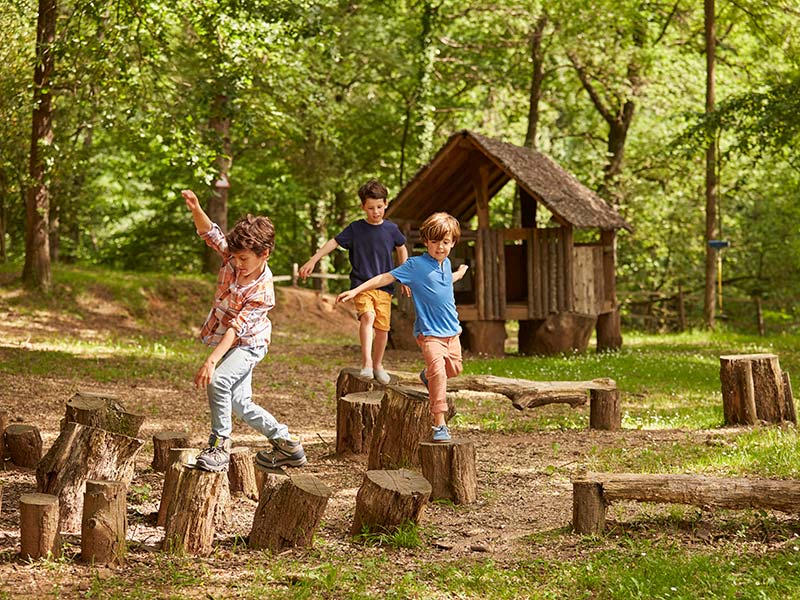
Giving children a voice which enables them to make choices and decisions that are meaningful to them is so important. If children and young people are actively listened to this will establish a positive interpersonal relationship whereby professionals and the individual can plan, implement and evaluate the choices that the individual has made.
Mae rhoi llais i blant neu bobl ifanc sy'n eu galluogi i wneud dewisiadau a phenderfyniadau sy'n golygu rhywbeth iddynt yn hynod o bwysig. Os gwrandewir ar blant a phobl ifanc, bydd hyn yn sefydlu perthynas ryngbersonol gadarnhaol lle gall gweithwyr proffesiynol a'r unigolyn gynllunio, gweithredu a gwerthuso'r dewisiadau y mae'r unigolyn wedi'u gwneud.

In health and social care, being aware of a child or young person’s background is important, as being aware of socioeconomic factors can inform practice and individualise the care required.
It is important that children and young people are at the centre of the care planning process, so they feel that they are actively involved in their own care. Detailed and effective care planning can ensure all their needs, wishes and preferences are met, and care packages should never be made without the involvement of the child or young individual concerned.
Being able to meet the holistic needs of children and young people is key to ensuring that we are not just focussing on one aspect of a child’s needs but ensuring all areas are considered and support is put in place for whatever the needs may be.
Ym maes iechyd a gofal cymdeithasol, mae cefndir plentyn neu berson ifanc yn ffactor pwysig i'w ystyried oherwydd gall bod yn ymwybodol o ffactorau economaidd gymdeithasol lywio'r ymarfer a helpu i deilwra'r gofal sydd ei angen.
Mae'n bwysig bod plant neu bobl ifanc wrth wraidd y broses cynllunio gofal, er mwyn iddynt deimlo eu bod yn cael eu cynnwys yn eu gofal eu hunain. Gall gwaith cynllunio gofal manwl ac effeithiol sicrhau bod eu holl anghenion, dymuniadau a dewisiadau'n cael eu bodloni, ac ni ddylid byth creu pecynnau gofal heb gynnwys yr unigolyn dan sylw.
Mae gallu diwallu anghenion cyfannol plant a phobl ifanc yn allweddol i sicrhau ein bod nid yn unig yn canolbwyntio ar un agwedd ar anghenion plentyn, ond yn sicrhau bod pob maes yn cael ei ystyried a bod cefnogaeth yn cael ei rhoi yn ei le ar gyfer beth bynnag yw'r anghenion.
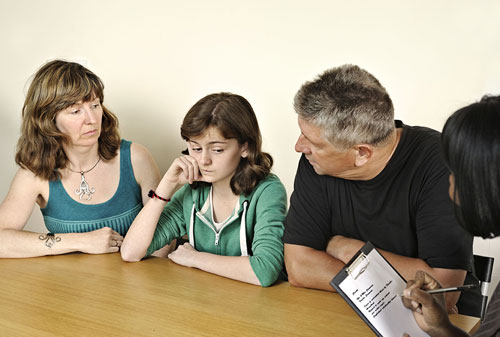
Being child-centred is about listening to and learning about what children and young people want from their lives, what they did and enjoyed in the past, and helping them to think about what they want now and in the future.
The child or young person’s experience, history, culture, beliefs, preferences, family, relationship, informal networks and community are all key to establishing a way forward and meeting their needs to enable positive progress. Family, friends, professionals and services need to work together with the individual to make this happen.
Mae gweithredu mewn ffordd plant-ganolog yn golygu gwrando ar unigolion a dysgu am yr hyn y maent am ei gael o'u bywydau, yr hyn a wnaethant a'r hyn y gwnaethant ei fwynhau yn y gorffennol, a'u helpu i feddwl am yr hyn y maent yn ddymuno ei gael nawr ac yn y dyfodol.
Mae profiad, hanes, diwylliant, credoau, dewisiadau, teulu, cydberthynas, rhwydweithiau anffurfiol a chymuned y plentyn neu'r person ifanc i gyd yn allweddol i ganfod ffordd ymlaen a diwallu ei anghenion er mwyn galluogi cynnydd cadarnhaol. Mae angen i aelodau o'r teulu, ffrindiau, gweithwyr proffesiynol a gwasanaethau cydweithio â'r unigolyn er mwyn sicrhau bod hyn yn digwydd.

When assessing and planning, it’s vital that children and young people are involved in the process. Care professionals must remember that children and young people are at the foundation of care and support planning.
Providing care that health and social care workers believe a child or young person needs is not appropriate. Health and social care workers must value a child or young person’s role in this process, embedding best practice. It is essential to empower children and young people in their own care.
When establishing the preferences and backgrounds of children and young people, it is vital to ask the child or young person what they want and what they consider their needs to be. Leading questions should be avoided, for example ‘Your after-school arrangements are fully meeting all your needs, aren’t they?’ This may lead to agreement when it may not actually be the case. Open questions are preferred to closed questions, so instead of asking ‘Are you happy?’ try, ‘Tell me about how you feel at the moment.’
Wrth asesu a chynllunio, mae'n hollbwysig mai'r plentyn neu’r person ifanc sy'n arwain y broses. Rhaid i weithwyr gofal proffesiynol gofio bod yr unigolyn wrth wraidd gwaith cynllunio gofal.
Nid yw'n dderbyniol darparu gofal y mae gweithwyr iechyd a gofal cymdeithasol yn meddwl sydd ei angen ar blentyn neu berson ifanc. Rhaid i weithwyr iechyd a gofal cymdeithasol werthfawrogi rôl unigolyn yn y broses hon – dyma'r arfer gorau. Mae'n hanfodol grymuso'r unigolyn yn ei ofal ei hun.
Wrth ganfod dewisiadau a chefndiroedd unigolion, mae'n hollbwysig gofyn i'r plentyn neu'r person ifanc beth mae am ei gael a beth mae'n credu yw ei anghenion. Dylid osgoi cwestiynau arweiniol; er enghraifft, ‘Mae dy drefniadau ar ôl ysgol yn diwallu dy anghenion i gyd yn llawn, onid ydyn nhw?’ Gall hyn wneud i'r unigolyn gytuno er nad yw'n teimlo hynny mewn gwirionedd. Mae'n well defnyddio cwestiynau agored yn hytrach na rhai caeedig felly, yn lle gofyn ‘Wyt ti'n hapus?’, gellid aralleirio'r cwestiwn fel hyn, ‘Dweda wrtha i sut rwyt ti'n teimlo ar hyn o bryd.’

Health and social care workers should meet with children and young people, their family and carers face to face. They should make clear that what is discussed will be confidential unless anything suggests harm to them or others. This will reassure the children and young people that it is okay to divulge any necessary information.
Discussions should be in a simple format. Confusing children and young people with acronyms, jargon and technical terminology will not help them to lead the assessment. However, workers should avoid patronising children and young people by using language that is too simplistic. A balance of clear, detailed information is important.
If anything needs repeating, it should be done patiently and clearly. Care workers should clarify and summarise to ensure that everything is understood as well as to minimise mistakes.
Copies of the documents should be given to everyone involved. Where possible, documents should be in a format the child/young person understands, e.g. pictures, video, written. Workers need to ensure the individual understands these and is given the opportunity to ask any questions that they may have.
Dylai gweithwyr iechyd a gofal cymdeithasol gwrdd â phlant a phobl ifanc wyneb yn wyneb. Dylent ddweud yn glir y bydd unrhyw beth a drafodir yn cael ei gadw'n gyfrinachol oni bai bod yr hyn sy’n cael ei drafod yn awgrymu niwed i’w hunain neu i eraill. . Bydd hyn yn tawelu meddwl yr unigolyn ei bod yn iawn datgelu unrhyw wybodaeth angenrheidiol.
Dylai trafodaethau fod yn syml. Ni fydd drysu unigolion ag acronymau, jargon a therminoleg dechnegol yn eu helpu i arwain yr asesiad. Fodd bynnag, dylai gweithwyr osgoi bod yn nawddoglyd ag unigolion drwy ddefnyddio iaith sy'n rhy syml. Mae'n bwysig taro cydbwysedd rhwng gwybodaeth glir a manwl.
Os bydd angen ailadrodd unrhyw beth, dylid gwneud hynny'n amyneddgar ac yn glir. Dylai gweithwyr gofal egluro a chrynhoi er mwyn sicrhau bod yr unigolyn yn deall popeth, a hefyd er mwyn sicrhau cyn lleied â phosibl o gamgymeriadau.
Dylai pawb sydd wedi eu cynnwys yn y mater dderbyn copi o’r dogfennau perthnasol. Lle y bo'n bosibl, dylai dogfennau fod ar fformat y mae'r plentyn/person ifanc yn ei ddeall, e.e. lluniau, fideo, ysgrifenedig. Mae angen i weithwyr sicrhau bod yr unigolyn yn deall y rhain ac yn cael cyfle i ofyn unrhyw gwestiynau a allai fod ganddynt.
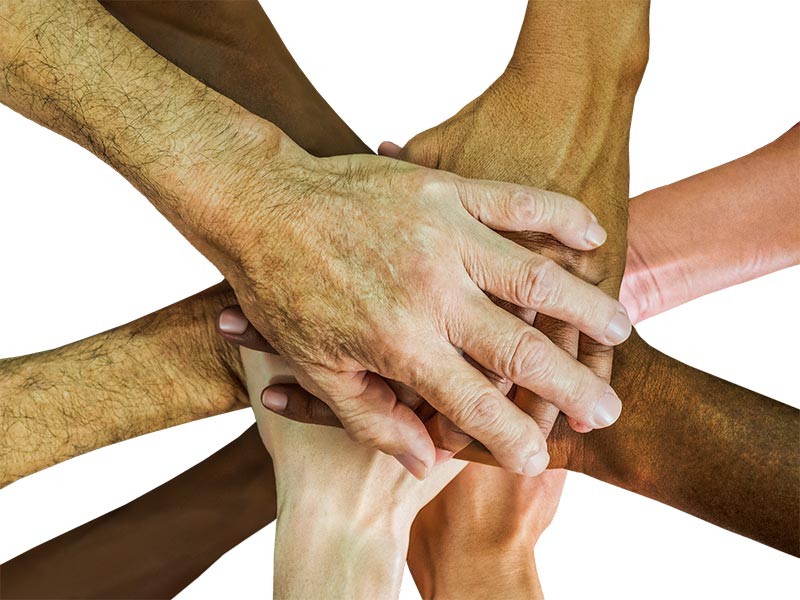
Children and young people who access health and social care services place their trust and confidence in health and social care workers and expect to be protected. Workers should always treat children and young people who use services in the way they would want to be treated themselves – with dignity and respect. This applies to every part of the workforce and in all settings.
We all expect to be treated with dignity and respect, and children and young people accessing health and social care services are no different.
Behaving with dignity and respect towards children and young people involves respecting their views, their choices and decisions, not making assumptions about how they want to be treated and working with care and compassion.
Those who receive care and support are able to make choices about the care they receive. This includes decisions about their everyday care needs. If children and young people cannot make meaningful choices, or are not supported to make choices, their care needs are not going to be met.
Workers must ensure they behave towards children and young people with dignity and respect to ensure they feel valued, regarded as individuals with their own specific needs and can trust that their needs will be identified, listened to and met.
Mae plant a phobl ifanc sy'n defnyddio gwasanaethau iechyd a gofal cymdeithasol yn ymddiried mewn gweithwyr iechyd a gofal cymdeithasol, yn rhoi eu ffydd ynddynt ac yn disgwyl cael eu diogelu. Dylai gweithwyr bob amser drin plant a phobl ifanc sy'n defnyddio gwasanaethau yn y ffordd y byddent am gael eu trin eu hunain – gydag urddas a pharch. Mae hyn yn berthnasol i bob rhan o'r gweithlu ac ym mhob lleoliad.
Rydym i gyd yn disgwyl cael ein trin ag urddas a pharch, ac nid yw unigolion sy'n defnyddio gwasanaethau iechyd a gofal cymdeithasol yn wahanol.
Mae ymddwyn ag urddas a pharch tuag at unigolion yn golygu parchu eu barn, eu dewisiadau a'u penderfyniadau, peidio â rhagdybio sut maent am gael eu trin, a gweithio mewn modd gofalgar a thosturiol.
Mae'r rheini sy'n derbyn gofal a chymorth yn gallu gwneud penderfyniadau am y gofal y maent yn eu derbyn. Mae hyn yn cynnwys penderfyniadau ynglŷn a’u hanghenion gofal beunyddiol. Os na all unigolion wneud, neu os na chânt eu cefnogi i wneud dewisiadau, ni chaiff eu hanghenion eu diwallu.
Rhaid i weithwyr sicrhau eu bod yn ymddwyn ag urddas a pharch tuag at unigolion er mwyn sicrhau bod unigolion yn teimlo eu bod yn cael eu gwerthfawrogi, yn cael eu hystyried yn unigolion â'u hanghenion penodol eu hunain ac y gallant ymddiried y bydd eu hanghenion yn cael eu nodi, y bydd rhywun yn gwrando arnynt ac y byddant yn cael eu diwallu.
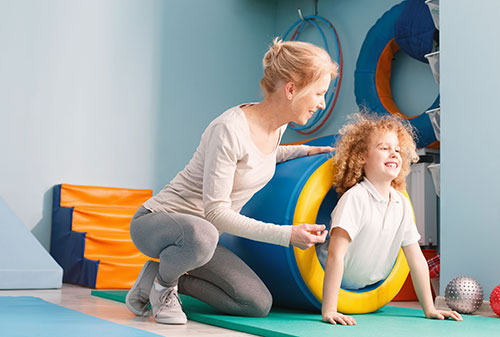
Child-centred approaches are the guiding principles that help to put the interests of the child receiving care or support at the centre of everything we do. They include individuality, independence, privacy, partnership, choice, dignity, respect and rights.
Child-centred approaches consist of working in partnership with the children and young people and their parents and/or carers to plan for their care and support. The child is at the centre of the care planning process and should be in control of all choices and decisions made about their lives. The values of compassion, dignity and respect are important when involving children in their own care. Decisions should be shared decisions, with the child seen as an equal partner in their care, not decisions made by health and social care workers alone.
Child-centred planning is about discovering and acting upon what is important to the child and what matters most to them in their lives.
Dulliau gweithredu plentyn-ganolog yw'r egwyddorion arweiniol sy'n helpu i roi diddordebau'r plentyn sy'n derbyn gofal neu gymorth yn ganolog i bopeth a wnawn. Maen nhw'n cynnwys unigoliaeth, annibyniaeth, preifatrwydd, partneriaeth, dewis, urddas, parch a hawliau.
Mae dulliau gweithredu plentyn-ganolog yn golygu gweithio mewn partneriaeth â'r plant a'r bobl ifanc a'u rhieni a/neu ofalwyr i gynllunio ar gyfer eu gofal a'u cymorth. Mae'r plentyn neu berson ifanc yn ganolog i'r broses cynllunio gofal a dylai fod â rheolaeth dros bob dewis a phenderfyniad sy'n cael ei wneud yn ei fywyd. Mae gwerthoedd tosturi, urddas a pharch yn bwysig wrth gynnwys plant yn eu gofal eu hunain. Dylai penderfyniadau fod yn benderfyniadau wedi'u rhannu, gan ystyried y plentyn yn bartner cyfartal yn ei ofal ei hun, yn hytrach na phenderfyniadau sy'n cael eu gwneud gan weithwyr iechyd a gofal cymdeithasol yn unig.
Mae cynllunio plentyn-ganolog yn golygu darganfod a gweithredu ar yr hyn sy'n bwysig i'r plentyn a'r hyn sydd o bwys mawr iddyn nhw yn eu bywydau.
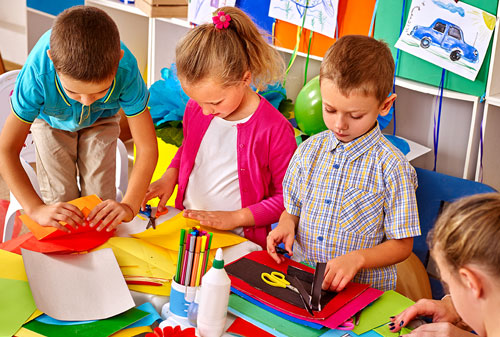
Working with the child, their parents and carers to identify the child’s strengths and abilities will be the best way to decide about their welfare and help them to make their own decisions. For example, a child may want to make their own decisions about the activities they are able and want to participate in.
The aim is to ensure that the child has as much control as possible over the choices they make. The care plan is needs-led, not service-led or staff-led. This means that support is identified to meet the specific needs of the child to make their life better, and not around what is already available or what is easier for staff. For example, the diet planned is what is best for the child, not what is already chosen by others.
Gweithio gyda'r plentyn, ei rieni a'i ofalwyr i nodi cryfderau a galluoedd y plentyn fydd y ffordd orau o benderfynu ar ei les a'i helpu i wneud ei benderfyniadau ei hun. Er enghraifft, efallai bydd plentyn am wneud ei benderfyniadau ei hun am y gweithgareddau mae'n gallu ac eisiau cymryd rhan ynddyn nhw.
Y nod yw sicrhau bod y plentyn neu'r person ifanc yn cael cymaint o reolaeth â phosibl dros y dewisiadau maent yn eu gwneud. Mae'r cynllun gofal yn seiliedig ar anghenion, yn hytrach na gwasanaeth ac arweiniad y staff. Mae hyn yn golygu bod cymorth yn cael ei nodi i fodloni anghenion penodol y plentyn i wneud ei fywyd yn well, ac nid o gwmpas yr hyn sydd ar gael eisoes neu'r hyn sy'n haws i staff. Er enghraifft, y deiet sydd wedi'i gynllunio yw'r hyn sydd orau i'r plentyn, nid yr hyn sydd wedi'i ddewis eisoes gan eraill.
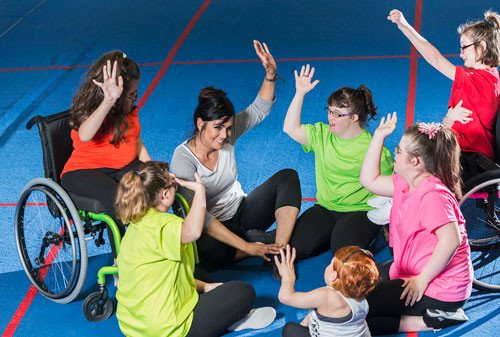
The literal definition of participation is ‘taking part’. In the context of children and young people’s rights, however, participation is about children and young people having their voices heard when decisions are being made that affect their lives, and being actively involved in decision-making processes. Participation is listening to and collaborating with children and young people.
Participation is one of the guiding principles of the United Nations Convention on the Rights of the Child (UNCRC). Article 12 of the UNCRC sets out the right of children and young people to express an opinion and to have their opinion taken into account when decisions are being made on any matter that affects them. This Article is seen as particularly important, in that it is an enabling right, empowering and supporting children and young people to access broader rights under the UNCRC, within the family, the school and the larger community context.
The principle affirms that children are active citizens with an important contribution to make to their families, schools, communities and nation. They have the right to express their views in all matters affecting them and for their views to be heard and given due weight in accordance with the child's age and maturity. It recognises the potential of children to enrich decision-making processes, to share perspectives and to participate as citizens and facilitators of change
Y diffiniad llythrennol a roddir i gyfranogi yw ‘cymryd rhan’. Yng nghyd-destun hawliau plant a phobl ifanc, fodd bynnag, mae cyfranogi’n ymwneud â rhoi llais i blant a phobl ifanc mewn penderfyniadau a allai effeithio ar eu bywydau nhw a rhoi cyfle iddynt fod yn rhan bendant o’r broses o wneud y penderfyniadau hynny. Mae cyfranogi’n golygu gwrando a chydweithredu â phlant a phobl ifanc.
Cyfranogiad yw un o brif egwyddorion Confensiwn y Cenhedloedd Unedig ar Hawliau’r Plentyn (CCUHP). Mae Erthygl 12 yn CCUHP yn nodi bod gan blant a phobl ifanc hawl i ddisgwyl y caiff eu barn ei hystyried pan fydd penderfyniadau’n cael eu gwneud ynghylch materion sy’n effeithio arnynt. Caiff yr Erthygl hon ei hystyried yn arbennig o bwyig yn yr ystyr ei fod yn hawl sy’n galluogi, yn grymuso ac yn cynorthwyo plant a phobl ifanc i fynnu hawliau ehangach o dan CCUHP, yng nghyd-destun y teulu, yr ysgol a’r gymuned ehangach.
Mae’r egwyddor yn cadarnhau bod plant yn ddinasyddion gweithredol sydd â rhywbeth pwysig i’w gyfrannu at eu teuluoedd, eu hysgolion, eu cymunedau a’u cenedl. Mae ganddynt yr hawl i fynegi barn am bob dim sy’n effeithio arnyn nhw ac i’w barn gael ei chlywed, ac iddi gael y sylw dyledus, yn unol ag oedran ac aeddfedrwydd y plentyn. Mae’n cydnabod y gall plant gyfoethogi’r broses o wneud penderfyniadau, gan rannu safbwyntiau a chyfranogi fel dinasyddion a hwyluswyr newid.
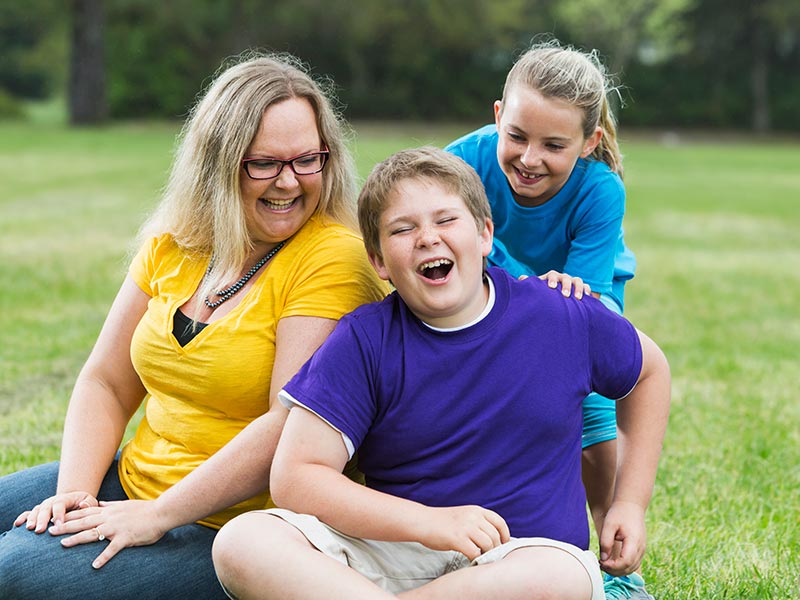
A rights-based approach involving child-centred planning is a way of helping children and young people to think about what they want now and in the future. It is about supporting children and young people to plan their lives, work towards their goals and get the right support. It is a collection of tools and approaches based upon a set of shared values that can be used to plan with a child or young person, not for them. Planning should build the child or young person’s circle of support and involve all the individuals who are important in that child or young person’s life.
Mae dull gweithredu seiliedig ar hawliau, sy'n cynnwys gwaith cynllunio plentyn-ganolog, yn ffordd o helpu i feddwl am yr hyn y maent am ei gael nawr ac yn y dyfodol. Y nod yw helpu unigolion i gynllunio eu bywydau, gweithio tuag at gyflawni eu nodau a chael y cymorth cywir. Yr hyn sydd dan sylw yw casgliad o adnoddau a dulliau gweithredu sy'n seiliedig ar gyfres o werthoedd a rennir y gellir eu defnyddio i gynllunio gydag unigolyn, nid ar ei ran. Dylai'r gwaith cynllunio ddatblygu cylch cymorth yr unigolyn a chynnwys yr holl unigolion sy'n bwysig yn ei fywyd.

Child-centred approaches ensure that everyone has the desire to fulfil their personal potential. It is important to provide a safe, non-judgemental and compassionate place where the child or young person can be supported to think about what is important to them and make the best decisions.
A child or young person’s well-being includes their sense of hope, confidence and self-esteem, their ability to communicate their wants and needs, social life and experiencing pleasure or enjoyment. This can involve the activities and experiences a child or young individual chooses to take part in. To promote a child or young person’s well-being, they need to be happy with as many aspects of their life as possible. If the child or young person, their parents or carers think that something would help them to feel better, health and social care workers need to be positive, understanding, empathic and non-judgemental. They should listen to what the child or young individual considers important in their lives and help them to make the changes they want, such as being able to join in particular activities or groups, for example.
Mae dulliau gweithredu plentyn-ganolog yn sicrhau bod pawb yn awyddus i wireddu ei botensial personol. Mae'n bwysig darparu rhywle diogel, tosturiol lle nad oes barnu, lle y gellir helpu'r unigolyn i feddwl am yr hyn sy'n bwysig iddo a gwneud y penderfyniadau gorau.
Mae llesiant plentyn neu berson ifanc yn cynnwys ei ymdeimlad o obaith, hyder a hunan-barch, a'i allu i gyfleu'r hyn sydd ei eisiau a'i angen arno, ei fywyd cymdeithasol a chael a dangos pleser neu fwynhad. Gall hyn gynnwys y gweithgareddau a'r profiadau y bydd unigolyn yn dewis cymryd rhan ynddynt. Er mwyn hybu llesiant unigolyn, bydd angen iddo fod yn hapus â chynifer o agweddau ar ei fywyd â phosibl. Os bydd yr unigolyn o'r farn y byddai rhywbeth yn ei helpu i deimlo'n well, mae angen i weithwyr iechyd a gofal cymdeithasol fod yn gadarnhaol, yn amyneddgar ac yn empathig, a pheidio â barnu. Dylent wrando ar yr hyn sy'n bwysig i'r unigolyn yn ei fywyd, a'i helpu i wneud y newidiadau y mae am eu gwneud, fel gallu ymuno mewn gweithgareddau neu grwpiau penodol, er enghraifft.
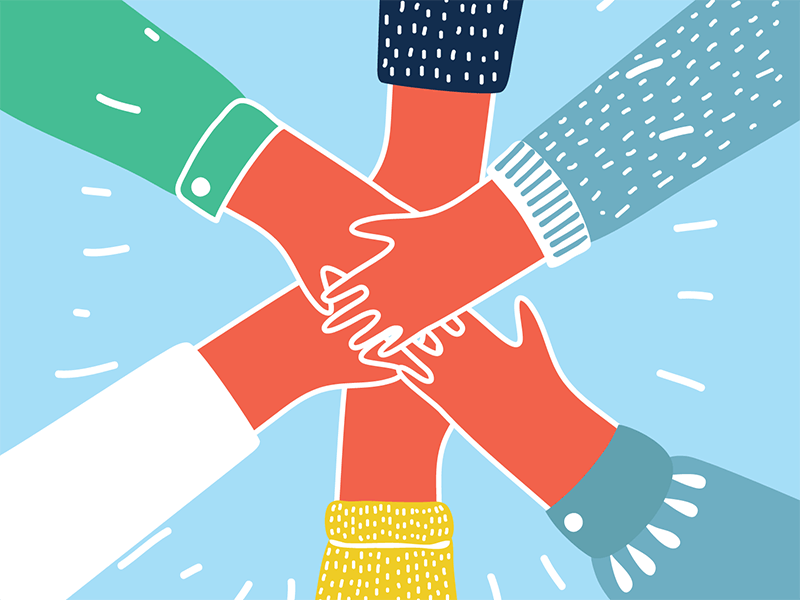
Child-centred approaches will enable professionals to consider how they can help children or young people to access services and facilities, making adaptations where necessary to ensure inclusive practice.
Professionals should work alongside children and young people to find out what they enjoy doing and what is important to them, including their hobbies and interests. As a result of this discussion, steps can be taken to see what can be done to organise this and support the child or young person.
Mae dulliau gweithredu plentyn-ganolog yn caniatáu gweithwyr proffesiynol i ystyried sut y byddant yn medru helpu plant a phobl ifanc i gael mynediad at wasanaethau a chyfleusterau, gan addasu be fydd angen er mwyn sicrhau arferion cynhwysol.
Dylai gweithwyr proffesiynol weithio gyda phlant a phobl ifanc er mwyn darganfod yr hyn maent yn ei fwynhau a’r hyn sy’n bwysig iddynt, gan gynnwys eu diddordebau a'u hobïau. O ganlyniad i’r trafodaethau rhain, gall y gweithwyr drefnu beth fydd angen wneud er mwyn cefnogi’r plentyn neu berson ifanc.

Consent involves one individual giving permission to another to do something. In health and social care settings, this generally means that the child or young person, or their parent or carer, gives consent to take part in an activity or to be given care or a treatment. It is a legal requirement that consent is established before any intervention or care-giving activity takes place. Individuals aged 16 or over are entitled to consent to their own treatment, and this can only be overruled in exceptional circumstances.
In relation to the provision of health and social care services, it is important to remember that:
Under legislation children under the age of 16 are able to consent to their own treatment if they are considered to have the ability and understanding to fully comprehend what the proposed treatment involves. This is known as being Gillick competent. Otherwise, someone with parental responsibility can consent for them.
Consent can be given in a number of ways. This can be through verbal communication, in writing or through actions. The child or young person might also allow another individual to do something with or to them, perhaps by raising an arm to be supported when dressing, and thereby indicating consent. Informed consent is given when the child or young person understands what they are consenting to.
Cydsyniad yw pan fydd unigolyn yn rhoi caniatâd i unigolyn arall i wneud rhywbeth. Mewn lleoliadau iechyd a gofal cymdeithasol, mae hyn yn aml yn golygu bod y plentyn neu’r person ifanc yn cydsynio i gymryd rhan mewn gweithgaredd, neu i gael gofal neu driniaeth. Mae'n ofynnol yn ôl y gyfraith cael cydsyniad cyn i unrhyw ymyriad neu weithgaredd rhoi gofal ddigwydd. Mae gan unigolion 16 oed neu'n hŷn hawl i gydsynio i'w triniaeth eu hunain, a dim ond mewn amgylchiadau eithriadol y gellir diystyru hyn.
Mewn perthynas â darparu gwasanaethau iechyd a gofal cymdeithasol, mae'n bwysig cofio'r canlynol:
O dan ddeddfwriaeth mae plant dan 16 gyda’r hawl i gydsynu i’w triniaeth os oes ganddynt y dealltwriaeth a’r gallu i ddeall yn llwyr beth mae'r driniaeth arfaethedig yn gynnwys. Caiff y rhain ei cysidro yn gymwys yn ôl safon Gillick. Fel arall, gall rhywun â chyfrifoldeb rhiant gydsynio iddynt.
Gellir rhoi cydsyniad mewn nifer o ffyrdd, boed drwy gyfathrebu geiriol, yn ysgrifenedig neu drwy weithredoedd neu symudiadau. Gallai'r plentyn neu berson ifanc hefyd ganiatáu i unigolyn arall wneud rhywbeth iddo neu gydag ef, efallai drwy godi braich i gael cymorth wrth wisgo, sydd felly'n dangos cydsyniad. Rhoddir cydsyniad ar sail gwybodaeth pan fydd yr unigolyn yn deall beth mae'n cydsynio iddo.